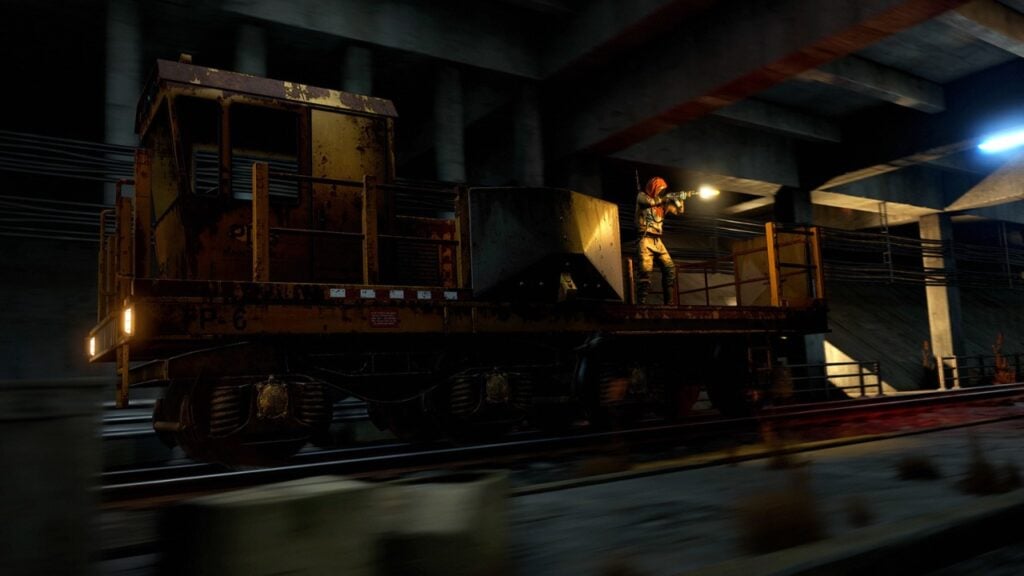Today, the team at Facepunch went live with the Industrial Update for their popular sandbox open-world shooter Rust, along with the accompanying patch notes. The Industrial update to Rust will bring a handful of updates to various in-game craftables, along with server changes.
However, with these patch notes, the community can expect quite a few changes to things they are familiar with this time around. So, without any more introduction, read the full patch notes for the Rust Industrial update.
Rust Industrial Update Patch Notes
Industrial
Bring new levels of efficiency and unlock new avenues for automation with this month’s set of Industrial entities. With these new tools, you can move items around your base as well as craft items automatically without you needing to lift a finger.
Storage Adaptor
The Storage Adaptor is the starting point for most of your Industrial plans – simply attach an adaptor to an existing storage entity to make that entity compatible with your Industrial systems. The adaptor does not require power.
Some entities have more than one slot that a storage adaptor can be attached to for ease of placement. Typically the storage adaptor can use all inventory slots on its attached storage for input/output, although there are some exceptions:
When attached to a furnace, the Input will insert items into the Fuel/Inputs item slots, while the output will remove items from the output slots
When attached to a locker, the storage adaptor will only access one partition. To access all partitions, you’ll need to place three storage adaptors
The storage adaptor is compatible with the following:
- Tool Cupboard
- Large Wooden Box
- Small Wooden Box
- Small Furnace
- Large Furnace
- Refinery
- Electric Furnace
- Locker
- Fridge
- Drop box
- Vending Machine
Industrial Conveyor
The conveyor is responsible for moving items from one entity to another, generally via Storage Adaptors. Once powered and turned on, the conveyor will look for items in containers connected to its inputs and then divide those items amongst its outputs.
By default, a Conveyor will move any item it can find, but you can also assign a filter to have more precise control over exactly what items you’re moving. Each conveyor’s filter can have up to 12 items or categories (resources/components/clothing/etc.). When a filter is assigned, the conveyor will only transfer items that pass those conditions. You can also assign values to each item in a filter to control quantities by setting the Maximum amount (don’t send resources if the target container has over X of that resource already) and Minimum amount (only send resources in a minimum batch of X size).
You’ll also find a Filter Pass and Filter Fail electrical passthrough. These will activate based on the current state of the conveyor allowing you to control other parts of the Industrial network based on what items are being moved around.
Pipe Tool
The Pipe Tool is how you connect Industrial entities – if you’ve used the Wire or Hose tool before, you’ll be right at home. Pipes come in 4 colors to help identify what’s going where. The same distance rules apply here, except that the anchor points need to be a small distance apart from one another and that pipes cannot go through building blocks or Vending Machines. They can, however, go through deployables like doors.
Industrial Splitter/Combiner
These work as you’d expect, allowing you to funnel or split the flow of items. In the case of a splitter connected to the output of a Conveyor, the conveyor will spread its resources across all of its connections (e.g., a Conveyor connected to a splitter which connects to three boxes that want to send 600 wood will send 200 wood to each box).
Industrial Crafter
Once attached to a workbench (any tier), the Industrial Crafter allows you to craft items automatically once provided with a blueprint and the required materials. Simply insert the blueprint of your choice in the blueprint slot, insert the required materials, connect some power, and turn it on to start producing items.
The Industrial Crafter has built-in Industrial slots (so no need for an adaptor) so that you can use Conveyors to insert materials and then extract the finished result. There is also a Blueprint In/Out Industrial slot allowing you to swap out the blueprint being crafted. The Crafter can only craft items that are appropriate for the workbench it’s attached to and will take the same amount of time to craft an item as a player would.
Electric Furnace
To complement the Industrial items, we’re also releasing the new Electric Furnace. It works similarly to other furnaces with a slightly accelerated smelting rate, except that it requires power instead of a fuel item. This also means that it doesn’t produce charcoal.
Limitations and Server options
To maintain server performance, there are several limitations to prevent Industrial networks from becoming too out of control. There is a hardcoded 16-container input/output limit for each conveyor. This means that, as well as the max depth limitation of regular IO, a conveyor will only be able to see the first 16 containers it encounters in the input/output network.
There is also a hardcoded limit on how many items in a stack a Conveyor can move in a single tick – 32. If a stack has a count higher than this, it will be moved gradually over several ticks.
We will evaluate these restrictions in the future once we get more of a sense of how these tools are being used in the real world.
There are also several convars to control the speed and efficiency of industrial systems:
- server.conveyorMoveFrequency – How often conveyors attempt a move (default 5s)
- server.industrialCrafterFrequency – How often crafters attempt to craft something (default 5s)
- server.maxItemStacksMovedPerTickIndustrial – How many whole stacks a conveyor can move in a single tick (default 12)
Codelock Default Options
Previously, doors would show “Open” as the default option whether you had the code or not, requiring you to randomly stumble upon doors you couldn’t open, beeping in your face, then requiring you to hold E to bring up the radial menu and select unlock.
The new default options are as follows:
- first placed = “change code” (to quickly set your code)
- unauthorized on codelock & auth on TC = “enter code”
- authorized on codelock & unlocked door = “lock door” (to prevent leaving doors unlocked)
This should allow you to see at a glance what you still need to enter a code on & open the codelock UI much easier.
Train Wagon Loot
Train wagons containing crates now have different variants of varying qualities. Overall, you should see wagons with higher-quality loot from crates.
After reading through the patch notes for the Rust Industrial update, you can find the game available on PC via Steam. Additionally, head over to the official website to read the Rust Industrial official patch notes, along with any more information you’re looking to find. You can also keep an eye out for future updates to Rust there. Lastly, outside of the Rust Industrial update patch notes, you can learn more on their official website if you’re interested in the developers at Facepunch and any of their other projects.







